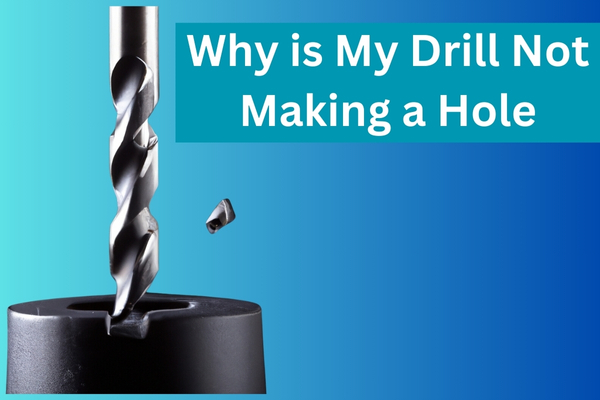Are you baffled by your drill’s inability to bore a hole despite your best efforts? In this comprehensive guide, We’ll address common issues encountered during drilling, offering insights to effectively overcome these challenges.
Introduction: Troubleshooting Drill Problems

Drilling seems like a straightforward task until your drill encounters unexpected hurdles, stalling your project. Understanding these issues and resolving them promptly can make a significant difference in your drilling experience. Let’s dive into the perplexities of drilling problems and how to tackle them efficiently.
Drill Bit Direction: Correct Rotation
Impact of Incorrect Rotation
When your drill struggles to advance into drywall or plaster, the culprit might be its rotation direction. Clockwise rotation is crucial for forward movement. To rectify this, learn how to adjust the rotation direction using the drill’s selector or button. An incorrect rotation can hinder progress, but a simple adjustment can make all the difference.
Dull Drill Bits: Impact on Efficiency
Identifying Dull Bits
Frequent usage on various surfaces can dull your drill bits, impacting their efficiency. Knowing how to discern a dull bit is essential. Look for signs such as reduced cutting ability or rough holes. Replace worn-out bits promptly and select the right bit for different materials to enhance drilling efficiency.
Battery Health: Assessing Drill Power
Optimizing Battery Performance
Dying batteries can significantly weaken a drill’s effectiveness, particularly in older homes with denser wood. Regularly assess and optimize battery performance to ensure seamless drilling operations. A well-charged battery can make a notable difference in your drilling experience.
Metal Plates: Barrier to Drilling
Detecting and Navigating Around Obstacles
Encountering metal plates within walls can bring your drilling progress to a halt. Understanding how to identify these plates and navigate around them effectively is crucial. Detecting and avoiding these obstacles ensures a smoother drilling process.
Masonry Challenges: Brick and Cement
Adapting Techniques for Masonry
Drilling into exterior walls or chimneys can present challenges due to masonry construction. Understand how these surfaces impact drilling and adapt your techniques accordingly. With the right approach, drilling through masonry becomes more manageable.
Steel Studs: Challenges in Modern Constructions
Identifying and Adjusting Plans
Modern constructions often feature steel studs, posing difficulties for drilling. Identifying these studs and adjusting your project plan accordingly is vital. Specific techniques can help navigate through these obstacles with ease.
Other Potential Obstructions
Overcoming Unforeseen Obstacles
Exploring less common obstructions like soundproofing materials, concrete firewalls, or nails in plaster walls is crucial. Strategies to overcome these unforeseen obstacles ensure a smoother drilling experience.
If you want to learn about 10 Best Drill Bits For Concrete Lintels you can read this article.
FAQs:
Why is my drill getting excessively hot during use?
Your drill might be getting hot due to prolonged use or heavy workload. This can be a sign of overheating, which could potentially damage the drill. It’s advisable to give your drill breaks during extended use to prevent overheating.
What should I do if my drill bit gets stuck in the material I’m drilling?
If your drill bit gets stuck, avoid forcing it further into the material as this could break the bit or damage your drill. Instead, gently reverse the drill’s rotation to try and release the bit from the material.
How can I drill into harder materials like concrete without damaging my drill?
For drilling into harder materials like concrete, use specialized masonry bits and apply consistent pressure without forcing the drill. This prevents excessive strain on the drill, reducing the risk of damage.
Is it essential to wear safety gear while drilling?
Yes, it’s crucial to prioritize safety while drilling. Wear protective gear such as safety glasses to shield your eyes from debris, and gloves to protect your hands from sharp edges or heat generated during drilling.
What should I do if my drill’s motor sounds different than usual?
A change in your drill’s motor sound might indicate a potential issue. It could be due to internal motor problems or an obstruction within the drill. It’s advisable to stop using the drill and have it inspected by a professional.
Conclusion:
I hope, In this guide, you have learned about why is my drill not making a hole. Understanding the nuances of drilling problems and their solutions is key to a successful project. Troubleshooting these issues equips you with the knowledge to navigate various obstacles, ensuring your drilling projects proceed smoothly and efficiently.

I love it when people come together and share opinions, great blog, keep it up.
Thank you so much for your kind words! It’s always wonderful to see people engaging and sharing their perspectives. Glad you enjoyed the blog – I’ll keep working hard to create more content that brings people together!